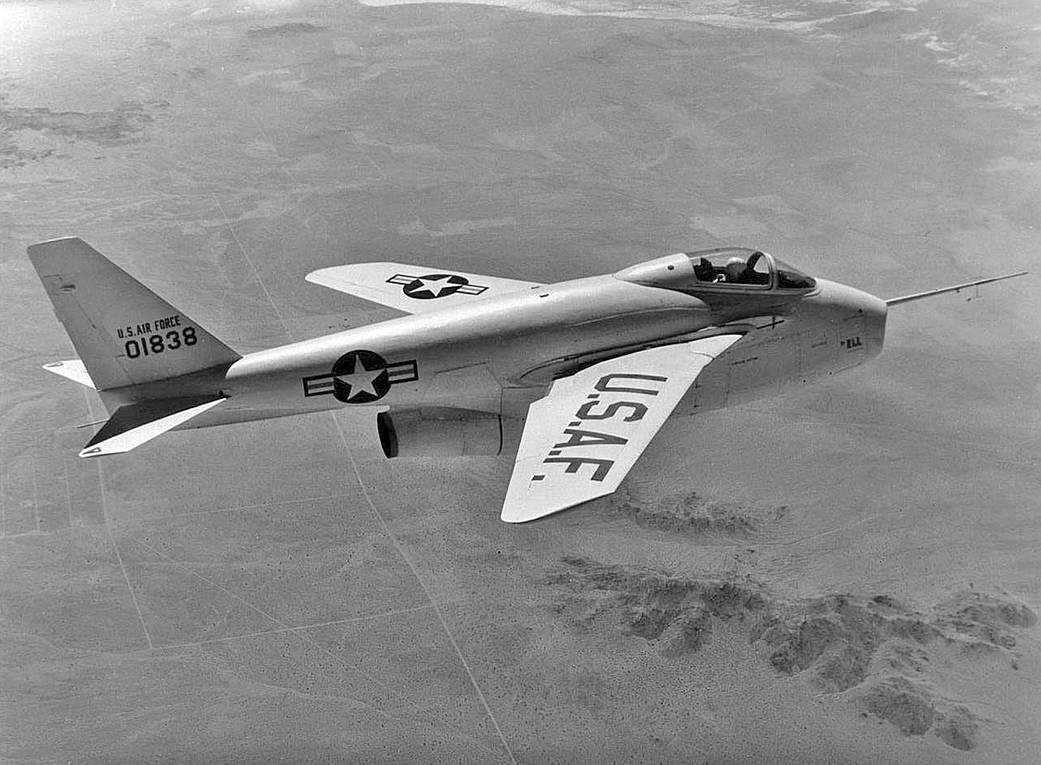The Bell X-5 was built to test the feasibility of changing the sweep angle of an aircraft’s wings in flight. This had advantages from both an operational and research point of view. An operational aircraft could take off with its wings fully extended, reducing both its take off speed and the length of the runway needed.
Once in the air, the wings could be swept back, reducing drag and increasing the aircraft’s speed. For an experimental aircraft, the ability to vary the wing’s sweep angle would greatly expand the research possibilities. Existing swept wing experimental aircraft, such as the D-558-II, XF-92A, X-2 and X-4, could each provide aeronautical data at only a single wing angle. A variable swept wing aircraft would be equivalent to a series of such experimental aircraft, as it could change the wing angle to the desired research objectives…Learn more
The X-5 was transferred to the National Museum of the United States Air Force at Dayton, Ohio in March of 1958,



























